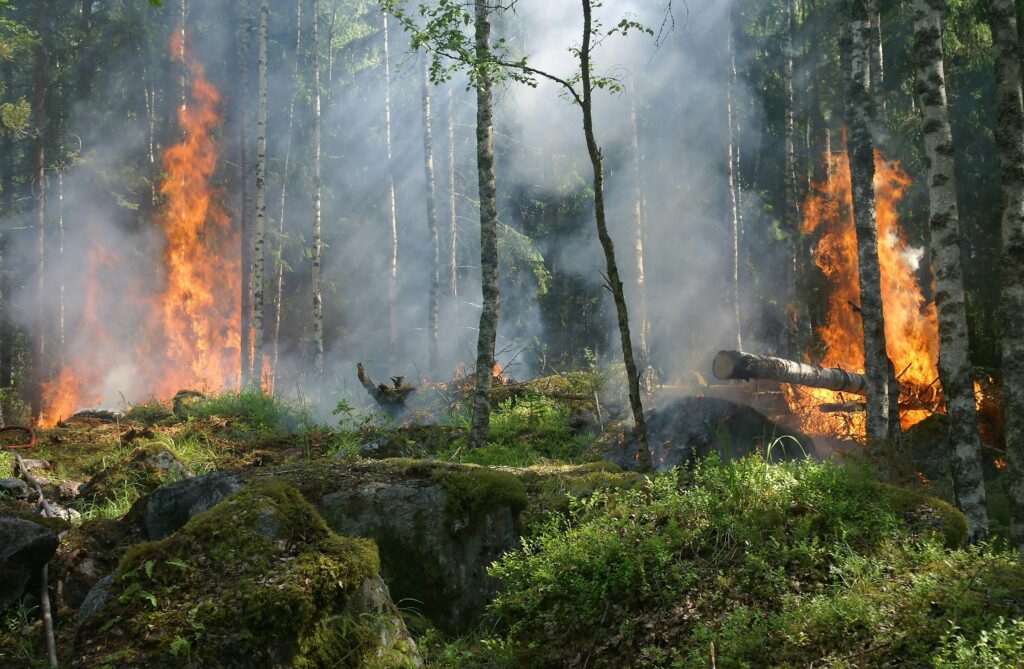
DISTRICT OF LAKELAND NO. 521
Serving Emma, Christopher, Anglin & McPhee Lakes, and a portion of the Boreal Forest Region.Environmental Bylaws and Environmental Plan
Healthy Shorelines
- Lakeshore Erosion
- Love Your Lake: Natural Edge Program
- Vacationland News: Shoring up our Shorelines
- Boat Wakes
- Wetlands
Water Quality
- Water Quality Overview
- Yearly Water Quality Summaries
- You and Lake Water Quality
- FAQ’s
- Tips for Healthy Lakes and Recreation
Wildlife/Invasive Species
Fires in Lakeland
General Information & Resources
About the Committee/Contact Us
Be FireSmart
The Lakeland District is special because of its remaining wilderness – to
live amid this forest, alongside its wildlife, is a privilege. But being in these
woods comes with an inherent risk of wildfire. Anyone who spent time
in the Lakeland area during the summer of 2015 will remember the grey
haze in the air, the acrid smoke that burned the eyes, the pink sun in the
middle of the day. It was an eerie time, with reports of encroaching fires
burning out of control around the province. The Canadian Armed Forces
were called in to help, plus eight other provinces sent assistance, as did
the U.S. Forest Service. Still, 1.7 million hectares of Saskatchewan forest –
and the wildlife within those forests – were lost that year.

Wildfires in Saskatchewan have only two causes: lightning strikes
and humans. According to the provincial government, about half of
Saskatchewan wildfires are started by human activity. This includes:
campfires; industrial activity; clean-up projects that get out of control;
vehicle and ATV exhaust; and arson. Human-started fires usually happen
in accessible areas, near communities and roads, which poses a greater
threat to people and property. But regardless of how wildfires start, there’s
no doubt that weather plays a big role in our ability to manage them.
According to PARC (Prairie Adaptation Research Collaborative) out of the
University of Regina: “The Canadian Prairies have warmed at a faster rate
than the global average and our future climate will be outside the range
of our recent experience. Wildfire is expected to increase under climate
change. Rather than allocate more resources to suppress fire, a more
useful and cost-effective approach is to consider landscape-scale planning
to reduce the risk of fire. Saskatchewan, along with other jurisdictions,
has adopted a variety of fire management strategies to reduce the risk of
wildfire and to protect communities. The strategies include an education
and prevention program known as FireSmart. The program will reduce the
risk from wildfire regardless of future climate conditions.”
Daryl Jessop is a retired Conservation Officer and Director of Wildfire
Support Services with the Ministry of Environment, a long-time
resident of the Lakeland, and a former member of the Environmental Advisory
Committee. He explains, “FireSmart is a Canadian program developed
by wildlife experts to assist property owners prepare their homes and
property through planning, preparedness, and mitigation measures to
reduce the risk of damage by wildfire.”
FireSmart is administered by the Saskatchewan Public Safety Agency
(SPSA). Detailed and easy-to-follow guidance documents can be found on their
home website. For example, homeowners are advised to reduce “surface fuels”
around their property such as twigs, leaves, dry grasses, and wood piles.
As well, woody shrubs, conifers, and bark mulch are all highly combustible.
Deciduous trees and fire-resistant plants are identified and recommended.
Dave Young is a Forest Protection Officer for the SPSA, who manages the Weyakwin
Response Area base. “I worked on a crew out of Christopher Lake from ‘88 to ‘96,”
he says. “In fact it was Daryl Jessop that hired me!” The Weyakwin Response Area
encompasses Hanson Hill to just south of La Ronge, and Montreal Lake to just east
of Big River. They are part of a team doing wildfire threat assessment in the Lakeland
this season. “We’re trying to do some field management for some of the communities,”
says Dave. “What that entails is thinning out the forest fuel types. That way if we do get
a fire coming into the community, if it’s a crown fire which is in the treetops, with the
thinning it will drop the crown fires down onto the surface fuel which is easier to attack
with your ground forces there. Last year we started working at Ramsey Bay up here at
Weyakwin. We’re also looking at McPhee, Christopher and Emma lakes.” Last summer,
Dave spoke at the Legion Hall in Christopher Lake about FireSmart and the Homeowners
Assessment which SPSA officers conduct. “Living and vacationing in Lakeland District
is within the forest and therefore in a wildfire-prone environment, where wildfires
will occur,” says Daryl. “There are numerous examples of destruction to communities
and property across the country and in the province. The good news is there are things
we can do to protect our homes, property, and that of our neighbours. A FireSmart
treated property reduces the risk of damage from wildfire and helps firefighters better
protect our homes and property. Be ‘fire wise’ and implement FireSmart.”
For more information regarding FireSmart please visit https://www.saskpublicsafety.ca/at-home/firesmart-at-home
From: Vacationland News EAC Articles